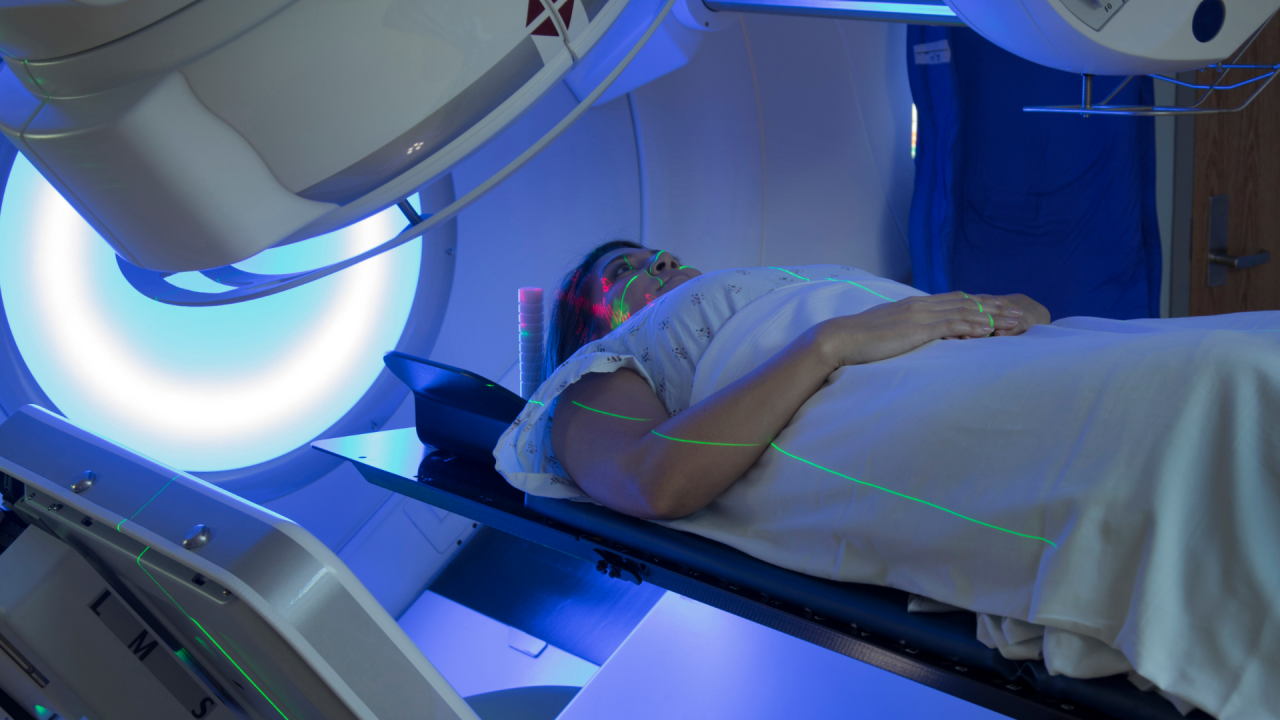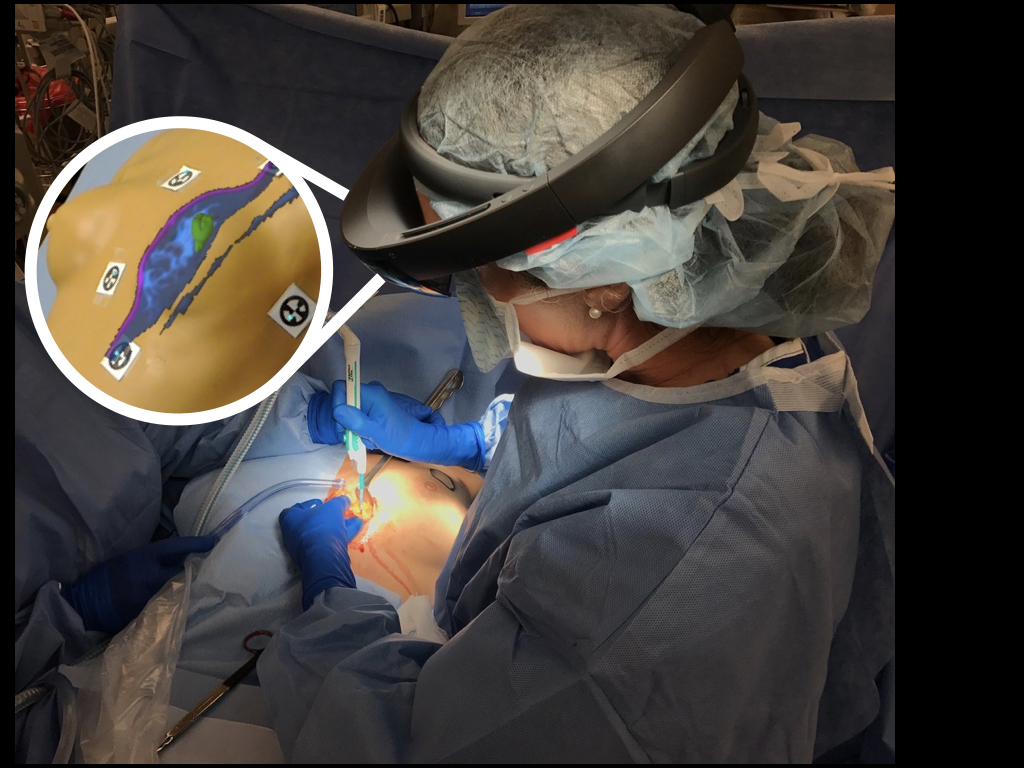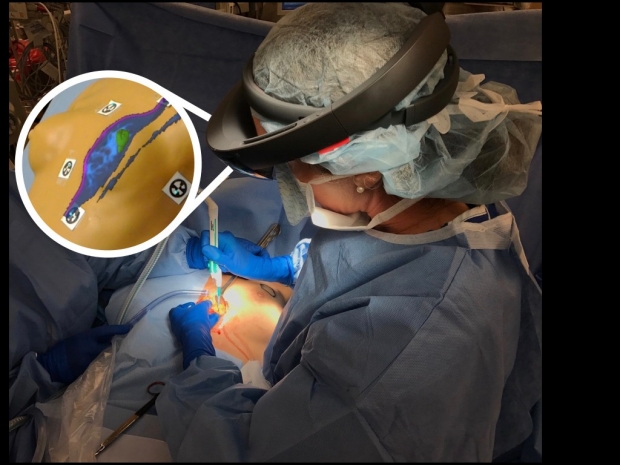## Level Up Your Breast Cancer Treatment: New Tech Gives Surgeons X-Ray Vision!
Imagine a world where surgeons could see inside your body, not just with their eyes, but with a level of detail that lets them target tumors with pinpoint accuracy. That world is closer than you think! Stanford Medicine is pioneering a revolutionary new imaging technology that’s helping surgeons reduce repeat breast surgeries, giving patients a better chance at a complete recovery.

The Problem: Repeat Surgeries and Mastectomy Rates
High Re-operation Rate due to Residual Tumor Concerns

For women diagnosed with early-stage breast cancer, lumpectomy, the surgical removal of the tumor and a small margin of surrounding tissue, is often the preferred option. However, a significant number of these patients require repeat surgery. Approximately 25% of women who undergo lumpectomy experience a need for a second operation due to concerns that residual tumor cells were left behind during the initial procedure. This can lead to anxiety, prolonged recovery times, and a higher risk of complications.
The high re-operation rate has also contributed to a rising trend in mastectomy procedures in the United States. Many women, fearing the need for repeat surgery and its associated risks, opt for mastectomy, the complete removal of the breast. While mastectomy offers definitive tumor removal, it is a more invasive procedure with longer recovery times and potential long-term effects.

The Solution: Mixed Reality Breast Imaging
How the Technology Works: Projecting 3D Tumor Images onto the Patient
Stanford Medicine researchers have developed a groundbreaking mixed-reality system that aims to reduce the need for repeat surgeries and empower patients with more informed choices. This innovative technology utilizes the Microsoft HoloLens, an augmented reality headset, to project a 3D “hologram” of images from a preoperative breast MRI directly onto the patient’s body.
During surgical planning, surgeons can visualize the tumor in its three-dimensional context, understanding its size, location, and relationship to surrounding tissue. This enhanced visualization allows for more precise tumor marking and surgical planning, minimizing the risk of leaving behind residual tumor cells.

Benefits for Surgeons: Improved Tumor Visualization and Planning
This mixed-reality approach offers several key benefits for surgeons:
- Enhanced Tumor Visualization: The 3D holographic representation provides a more intuitive and comprehensive understanding of the tumor’s location, extent, and surrounding structures.
- Precise Tumor Marking: Surgeons can directly mark the tumor on the patient’s skin, ensuring accurate targeting during surgery.
- Improved Surgical Planning: The mixed-reality system facilitates more detailed and accurate surgical planning, leading to more efficient and effective procedures.
- Reduced Risk of Re-operation: By minimizing the risk of leaving behind residual tumor cells, the mixed-reality system has the potential to significantly reduce the need for repeat surgeries.

Pilot Study: Mixed Reality vs. Traditional Methods
Comparing Accuracy and Effectiveness in Tumor Identification
Stanford Medicine researchers are currently conducting a pilot study to evaluate the effectiveness of the mixed-reality system in improving tumor identification during surgical planning. The study is comparing the performance of surgeons using the mixed-reality system to those using traditional methods, such as referring to 2D medical images on an external monitor and palpation.
Preliminary results from the pilot study have shown promising outcomes. Surgeons using the mixed-reality system demonstrated improved accuracy in identifying the tumor during surgical planning compared to those relying on traditional methods.
Implications and the Future of Breast Cancer Surgery
Potential to Reduce Repeat Surgeries and Mastectomy Rates
The successful implementation of this mixed-reality technology has the potential to revolutionize breast cancer surgery. By providing surgeons with unprecedented visualization capabilities, the system can help reduce the need for repeat surgeries, thereby improving patient outcomes and quality of life.
Moreover, by offering more precise tumor removal, the mixed-reality system may empower more women to opt for lumpectomy, avoiding the more invasive procedure of mastectomy. This could have significant implications for patient choice and breast cancer treatment options.
Empowering Patients with More Information and Choice
This innovative technology also has the potential to empower patients with more information and choice throughout their treatment journey. By visualizing the tumor in 3D, patients can better understand their condition and participate more actively in their surgical planning.
The mixed-reality system can bridge the gap between medical expertise and patient comprehension, fostering a more collaborative and informed approach to breast cancer treatment.
The Role of Technology in Advancing Surgical Precision
The development of mixed-reality technologies for breast cancer surgery highlights the transformative role of technology in advancing surgical precision and patient care. As technology continues to evolve, we can expect to see even more innovative tools that empower surgeons, improve diagnostic accuracy, and enhance patient outcomes in the fight against breast cancer.
Conclusion
So there you have it – a glimpse into the future of breast surgery, where precision and patient outcomes are elevated to unprecedented levels. Stanford Medicine’s groundbreaking imaging technology allows surgeons to visualize the intricate details of breast tissue with unparalleled clarity, minimizing the need for repeat surgeries. This means less pain, faster recovery, and a significantly improved quality of life for patients. The implications of this advancement extend far beyond the operating room. It represents a paradigm shift in surgical practices, paving the way for personalized and minimally invasive procedures across a wide range of specialties. Imagine a world where complex surgeries become less invasive, recovery times are shortened, and the risks associated with traditional methods are significantly reduced. This technology holds the potential to revolutionize healthcare as we know it, offering hope and improved outcomes for countless patients facing surgical procedures. The future of medicine is here, and it’s looking brighter than ever.
